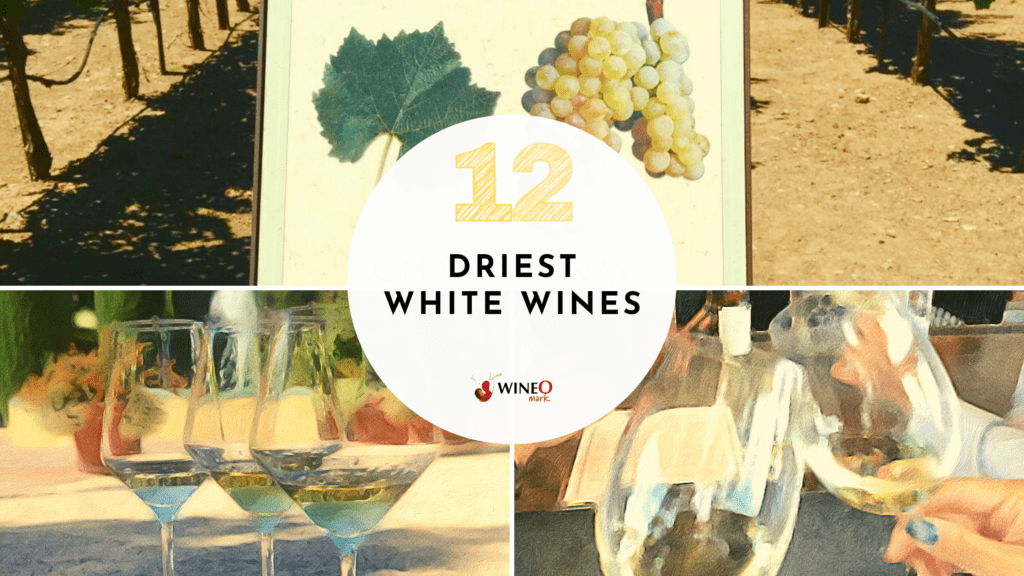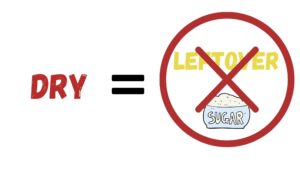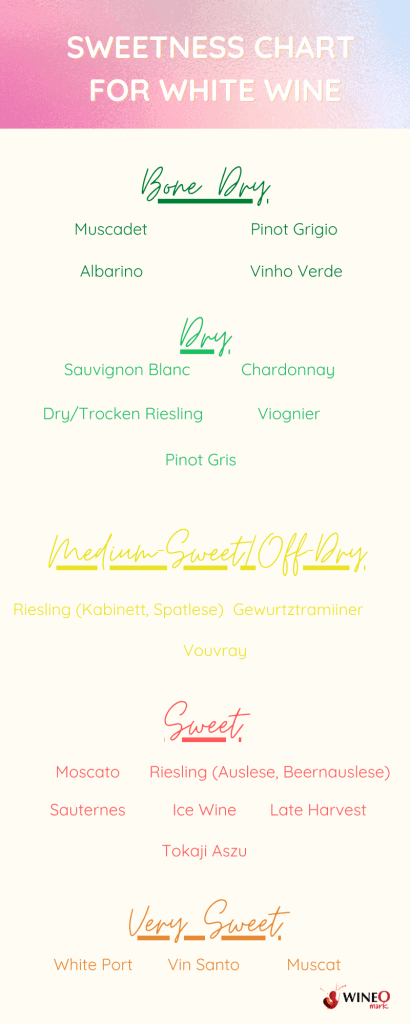
12 Best Lunch Spots In Napa
Best Lunch In Napa – Our 12 Favorite Spots! Lunch is a must when you’re out wine tasting! Whether you’re in the mood for a

Quick Answer: Our choice for the driest white wine is Muscadet. However, you can also make a case for Pinot Grigio, Assyrtiko, Sauvignon Blanc, and Albariño.
When it comes to white wine, there are a wide range of styles to choose from, including sweet, off-dry, and dry. However, for those who prefer a crisp and refreshing wine with no residual sugar, a dry white wine is the perfect choice.
Among dry white wines, some are notably drier than others, with a refreshing acidity and a clean finish that makes them perfect for pairing with food or enjoying on their own.
So in this article, we will explore the driest white wines, their characteristics, and what makes them unique. Whether you’re a seasoned wine enthusiast or a casual drinker, understanding the driest white wines can help you choose the perfect bottle for your next occasion.

A dry white wine is a wine that has no residual sugar left after the fermentation process is complete. This means that all of the sugar in the grape juice has been converted into alcohol by the yeast during fermentation.
The fermentation process starts when yeast is added to the grape juice. Yeast consumes the sugar in the grape juice and converts it into alcohol and carbon dioxide. If all of the sugar is consumed by the yeast during fermentation, the resulting wine will be dry.
In contrast, if some of the sugar is left unfermented, the wine will have residual sugar and will be sweeter. This can happen if fermentation is stopped before all of the sugar has been converted, or if the winemaker chooses to add sugar to the wine after fermentation.
The level of sweetness in a wine can be measured using a scale called the “residual sugar” or “RS” scale. This scale measures the amount of sugar that is left in the wine after fermentation, with a lower number indicating a drier wine.
A dry white wine typically has a lower RS value, indicating that there is little to no sugar left in the wine. The absence of residual sugar gives dry white wines their crisp, clean finish and allows their other flavors and aromas to shine through.
Residual sugar levels vary among different kinds of wine. In reality, many wines marked as “dry” you find contain roughly up to 10 g/L of RS.
In my opinion, Muscadet is the driest of all white wines. However, Assyrtiko, Sauvignon Blanc, Albariño, and Pinot Grigio are all typically made in the bone dry style too.
Muscadet: A bone-dry and light-bodied French white made from the Melon de Bourgogne grape, is truly unique in its flavor. Its minerally profile combined with high acidity gives it an invigorating citrus-like taste that you won’t find anywhere else.
It is widely acknowledged that the aroma, tannin and acidity of a wine are all essential characteristics to determine how “dry” it will taste.
Our sense of smell is a powerful tool that can influence our perception of sweetness in wine. Therefore, wines with sweet aromas will often taste sweeter than those without such an aroma. For example, a dry white wine like Gewürztraminer, which has aromas of lychee and honey, will often taste sweeter than they actually are.
The presence of tannins can also make a wine seem drier. Due to the fact that tannins are derived from grape skins and seeds, giving wine a drier, more astringent taste, most white wines don’t contain any. So again tannins actually make your mouth drier, but in wine terms “dry” means not sweet.
When tasting wine, acidity is often described as providing a mouthwatering sense of freshness, crispness, and a tart flavor. Therefore, a wine with higher acidity will taste drier than one that has less. Consequently some winemakers even add a couple grams of residual sugar to their wines to balance out the high acidity.

The label of a wine bottle can provide some clues as to whether the wine is dry or sweet, although it may not always be definitive. Here are a few things to look for on the label that can indicate the wine’s sweetness level:
If you prefer wines with a clean, refreshing taste and a dry finish, then a dry white wine is the perfect choice for you. These wines are excellent for pairing with light, delicate dishes, as well as for sipping on their own. Whether you’re enjoying a summer afternoon on the patio or having a dinner party with friends, a dry white wine is a versatile and refreshing choice.
Chardonnay and Sauvignon Blanc can both be made in a range of styles, including drier versions. Chardonnay is often oaked, which gives it a fuller body and more robust flavor profile than Sauvignon Blanc. As such, the driest version of Sauvignon Blanc might be drier than the driest Chardonnay.
Both Pinot Grigio and Sauvignon Blanc can be made in bone dry, refreshing crisp styles. It really depends on the producer and the region from which it comes.
Pinot Grigio is generally drier and lighter than Chardonnay, which tends to be fuller-bodied and more robust in flavor. As such, drier versions of Pinot Grigio are usually drier than drier versions of Chardonnay. However, this isn’t always the case.

Best Lunch In Napa – Our 12 Favorite Spots! Lunch is a must when you’re out wine tasting! Whether you’re in the mood for a

North Coast Wine Co. Outerbound Pinot Noir – WineO Mark Review Wine Stats Grape Variety: 100% Pinot Noir Vintage: 2019 ABV: 14% Wine Region: North Coast,

Böen Pinot Noir – WineO Mark Review Wine Stats Grape Variety: 100% Pinot Noir Vintage: 2021 ABV: 14.6% Wine Region: California Flavor Profile: Cherry, raspberry, blackberry,

Merry Edwards Sauvignon Blanc – WineO Mark Review Wine Stats Grape Variety: 100% Sauvignon Blanc Vintage: 2022 ABV: 14% Wine Region: Russian River Valley, California

The Hess Collection Allomi Chardonnay – WineO Mark Review Wine Stats Grape Variety: 100% Chardonnay Vintage: 2019 ABV: 14.3% Wine Region: Napa Valley, California Flavor Profile:

Stags’ Leap Chardonnay – WineO Mark Review Wine Stats Grape Variety: 100% Chardonnay Vintage: 2022 ABV: 14.1% Wine Region: Napa Valley, California Flavor Profile: Oak, vanilla,

Godeval Cepas Vellas Godello – WineO Mark Review Wine Stats Grape Variety: 100% Godello Vintage: 2021 ABV: 13% Wine Region: Valdeorras, Spain Flavor Profile: Peach,

Félix Solís Mucho Más Tinto N.V. – WineO Mark Review Wine Stats Grape Variety: Tempranillo, Syrah Vintage: Non-Vintage ABV: 14% Wine Region: Spain Flavor Profile: Vanilla,
